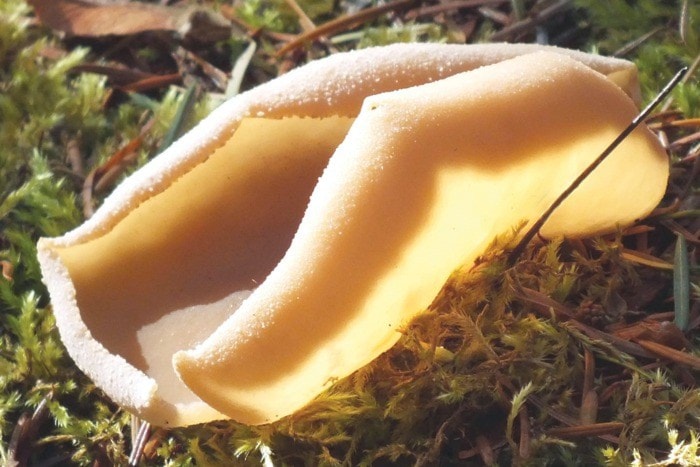November 2011 resulted in an early blast of winter, but Mother Earth always provides something to warm our souls.
In the Pacific Northwest, several fascinating mushrooms fruit in late fall and throughout winter...surviving even unseasonable snow.
Cup- or saucer-shaped mushrooms, without stalks, resemble colourful ears growing out of the ground. yellow rabbit ears, or rabbit-ear fungi (Otidea leporina), yellowish-brown, tend to be elongated in shape – like rabbit ears, thus the name.
Another local ‘cup’, the unmistakable orange peel fungi (Aleuria aurantia) grows in hard-packed gravel alongside the Canyon View Trail and looks like discarded orange peel.
If you find a cup fungus, simply blow gently over the top, and a puff of spore ‘dust’ will appear, as the change in air pressure is sufficient to disperse the tiny reproductive particles.
Winter excitement, fungus-wise, for both nature lovers and gourmands, often appears in the form of the widespread late fall oyster mushroom (aka tree oyster), a meaty edible now found on many supermarket shelves. This species actually needs a shot of cold to start the fruiting process, and usually grows from the trunk of a rotting tree.
The fruiting body is the only visible part of the fungus, as the thread-like ‘root’ or mycelium, is underground. Mycelium, a network of fine white threads only one cell wide, is present year-round, but the fruiting body appears only when conditions are right.
Locally, another brightly-coloured fungus that loves the cold is the blewit (Clitocybe nuda), a purple to bluish, smooth-capped ‘shroom with a stout stem – and an odour of frozen orange juice concentrate.
Most people walking the woods at this time of year don’t expect to see mushrooms, but it is worth the effort to look for those that fruit late in the season. The wind may blow, and snow may fall, but we can weather the storm. We’ve got some 'shrooms to keep us warm.
Recommended reading: A field guide to edible mushrooms of the Pacific Northwest by Harbour Publishing. $7.95. A plasticized fold-out pocket guide with full-colour photographs of our flavourful fungi…and dangerous delicacies.
E-mail Christine at: wildernesswest@shaw.ca.
